Abstract
The uptake of acetate in the human forearm was studied in five fasting (14 h) subjects during 10-min periods of ergometer work at 7 and 10 kilopond-meters per minute (kpm/min). A constant arterial acetate concentration was established by administration of a small quantity of alcohol (25 g) to the subjects after a control work period. Blood flow was measured by an indicator dilution technique. Acetate uptake varied linearly with the product of arterial acetate concentration and blood flow. Acetate metabolism was calculated to account for about 6.5% of the energy metabolism, assuming complete combustion to carbon dioxide and water. Oxygen uptake and blood flow did not change in the presence of acetate and ethanol.
After administration of ethanol the arterial concentrations of FFA and glycerol decreased to about half, whereas the lactate concentration increased to about twice the control values, confirming other reports.
Glucose utilization was increased and lactate output decreased during the ethanol periods, presumably a consequence of the changing arterial concentrations and increased insulin level. Measurements of the arterial and venous lactate/pyruvate concentration ratios indicate that the NAD-mediated cytoplasmic redox state in the muscle is not changed in the presence of acetate and ethanol.
Full text
PDF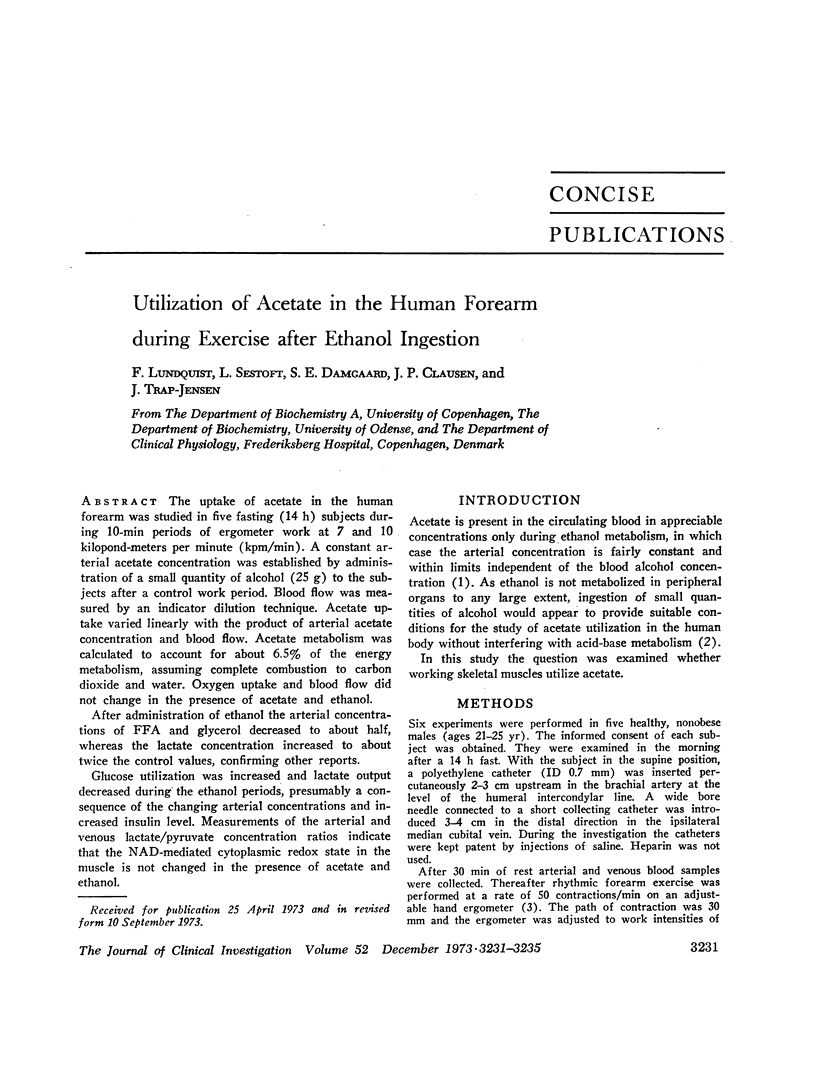
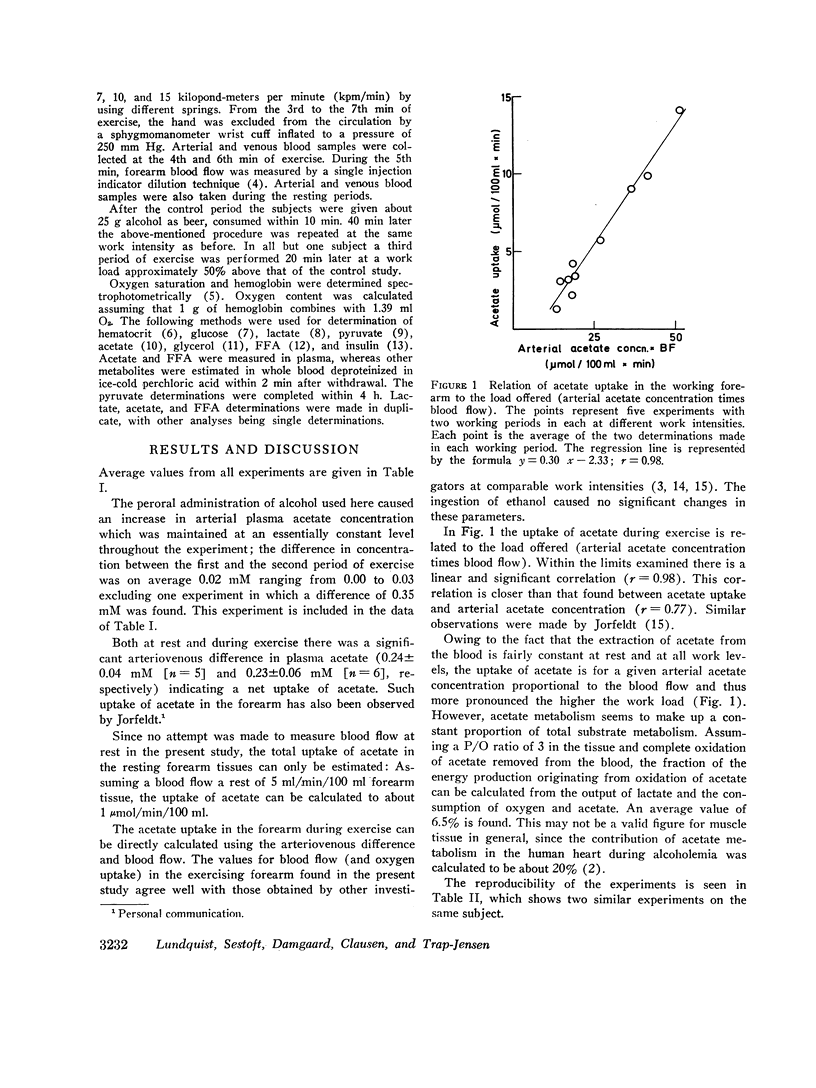
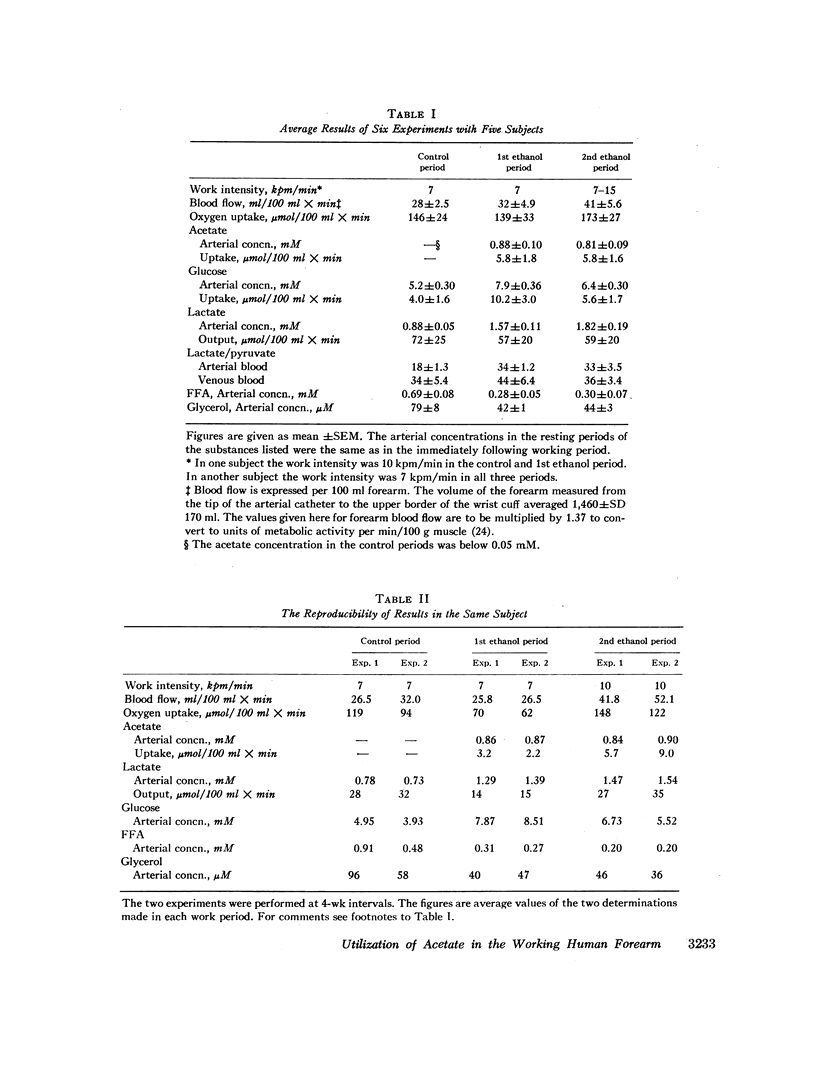
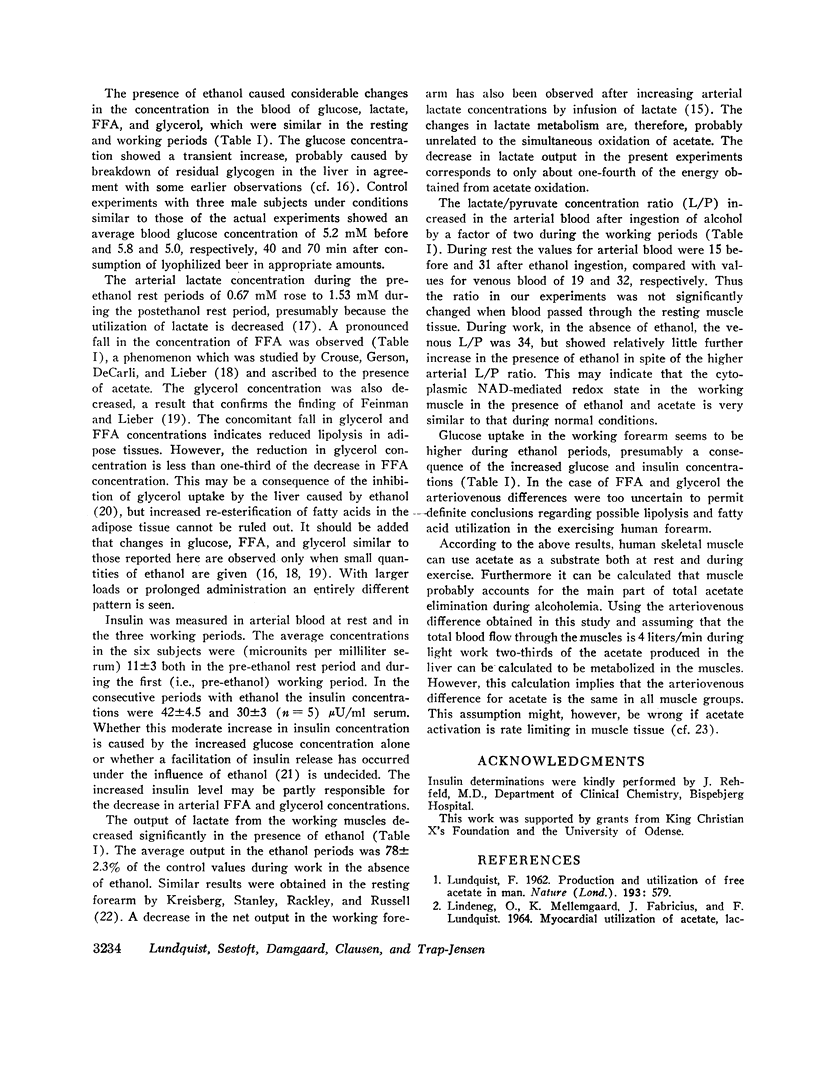
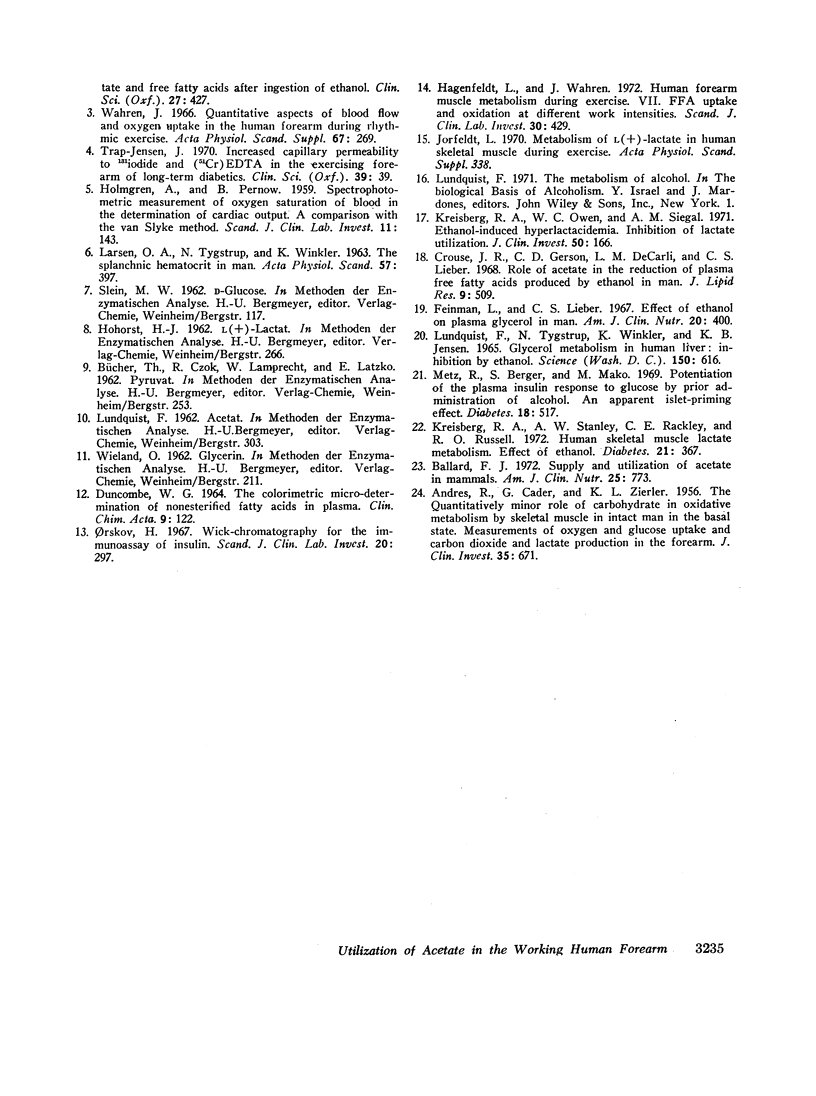
Selected References
These references are in PubMed. This may not be the complete list of references from this article.
- ANDRES R., CADER G., ZIERLER K. L. The quantitatively minor role of carbohydrate in oxidative metabolism by skeletal muscle in intact man in the basal state; measurements of oxygen and glucose uptake and carbon dioxide and lactate production in the forearm. J Clin Invest. 1956 Jun;35(6):671–682. doi: 10.1172/JCI103324. [DOI] [PMC free article] [PubMed] [Google Scholar]
- Ballard F. J. Supply and utilization of acetate in mammals. Am J Clin Nutr. 1972 Aug;25(8):773–779. doi: 10.1093/ajcn/25.8.773. [DOI] [PubMed] [Google Scholar]
- Crouse J. R., Gerson C. D., DeCarli L. M., Lieber C. S. Role of acetate in the reduction of plasma free fatty acids produced by ethanol in man. J Lipid Res. 1968 Jul;9(4):509–512. [PubMed] [Google Scholar]
- DUNCOMBE W. G. THE COLORIMETRIC MICRO-DETERMINATION OF NON-ESTERIFIED FATTY ACIDS IN PLASMA. Clin Chim Acta. 1964 Feb;9:122–125. doi: 10.1016/0009-8981(64)90004-x. [DOI] [PubMed] [Google Scholar]
- Feinman L., Lieber C. S. Effect of ethanol on plasma glycerol in man. Am J Clin Nutr. 1967 May;20(5):400–403. doi: 10.1093/ajcn/20.5.400. [DOI] [PubMed] [Google Scholar]
- Hagenfeldt L., Wahren J. Human forearm muscle metabolism during exercise. VII. FFA uptake and oxidation at different work intensities. Scand J Clin Lab Invest. 1972 Dec;30(4):429–436. doi: 10.3109/00365517209080281. [DOI] [PubMed] [Google Scholar]
- Kreisberg R. A., Owen W. C., Siegal A. M. Ethanol-induced hyperlacticacidemia: inhibition of lactate utilization. J Clin Invest. 1971 Jan;50(1):166–174. doi: 10.1172/JCI106470. [DOI] [PMC free article] [PubMed] [Google Scholar]
- LUNDQUIST F. Production and utilization of free acetate in man. Nature. 1962 Feb 10;193:579–580. doi: 10.1038/193579b0. [DOI] [PubMed] [Google Scholar]
- Lundquist F., Tygstrup N., Winkler K., Jensen K. B. Glycerol metabolism in the human liver: inhibition by ethanol. Science. 1965 Oct 29;150(3696):616–617. doi: 10.1126/science.150.3696.616. [DOI] [PubMed] [Google Scholar]
- Metz R., Berger S., Mako M. Potentiation of the plasma insulin response to glucose by prior administration of alcohol. An apparent islet-priming effect. Diabetes. 1969 Aug;18(8):517–522. doi: 10.2337/diab.18.8.517. [DOI] [PubMed] [Google Scholar]


